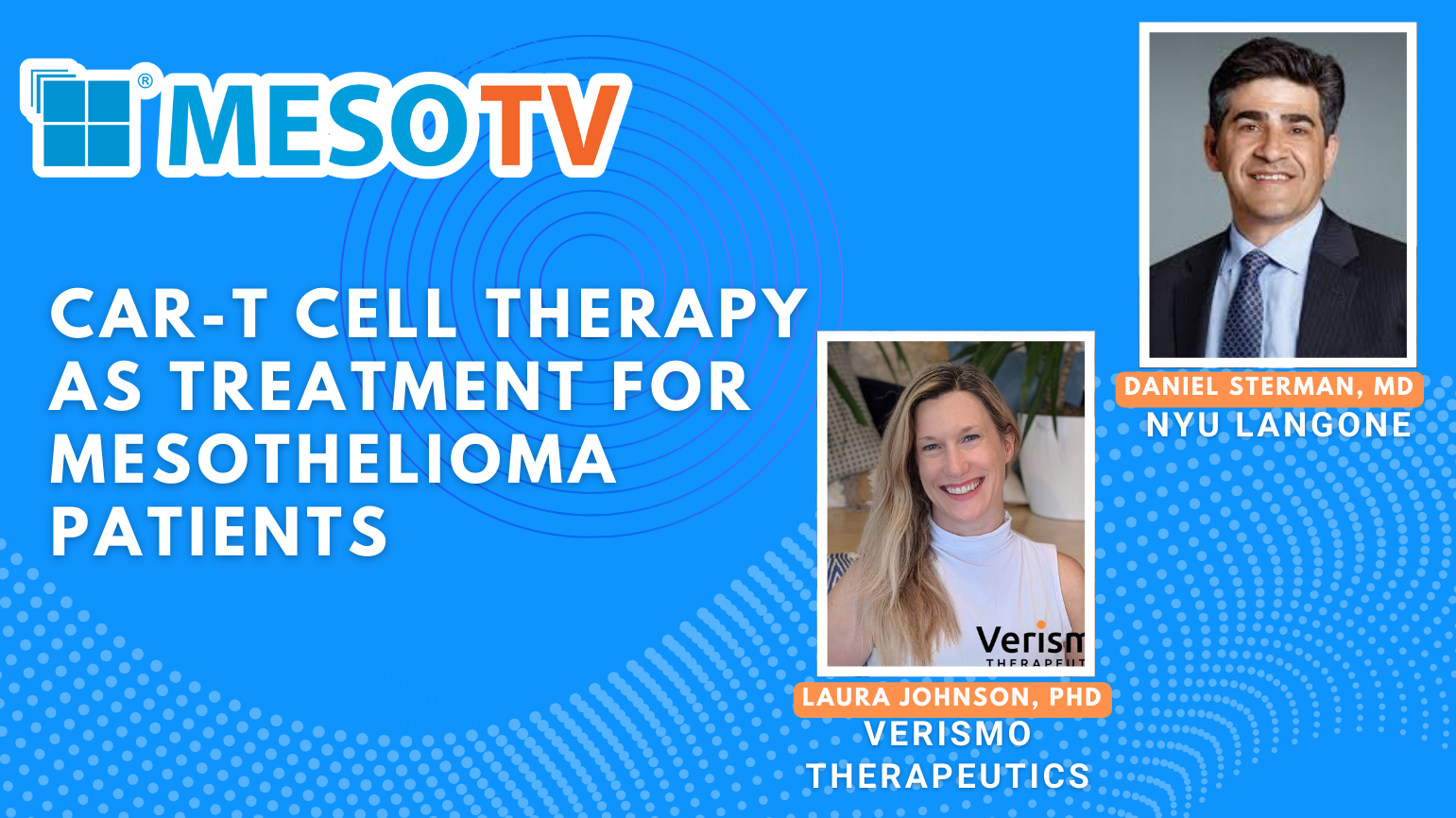 Over 40 individuals from the meso community joined us Thursday night for our latest Meet the Experts session “New Frontiers in Surgery” with Dr. Joseph Friedberg, a surgeon at the University of Pennsylvania. With an interest in diseases of the pleura, Dr. Friedberg’s surgical protocol involves laser treatments and photodynamic therapy, on which he has published a promising study. During Thursday’s teleconference, Dr. Friedberg explained photodynamic therapy and his surgical treatment process, how it works, and the benefits it may hold for mesothelioma patients.
Over 40 individuals from the meso community joined us Thursday night for our latest Meet the Experts session “New Frontiers in Surgery” with Dr. Joseph Friedberg, a surgeon at the University of Pennsylvania. With an interest in diseases of the pleura, Dr. Friedberg’s surgical protocol involves laser treatments and photodynamic therapy, on which he has published a promising study. During Thursday’s teleconference, Dr. Friedberg explained photodynamic therapy and his surgical treatment process, how it works, and the benefits it may hold for mesothelioma patients.
At the start of the teleconference, Dr. Friedberg explained that photodynamic therapy is a light-based cancer treatment that is minimally toxic, unlike chemotherapy, and not as penetrative as radiation. To administer the therapy, the patient is given a compound similar to chlorophyll, which is used by plants to capture light energy from the sun. The compound enters the patient’s cells, making them very light sensitive and giving them the ability to capture visible light energy. The light energy only penetrates a small distance into the body, which is enough to cause reactions that can kill cancer cells. In a disease such as pleural mesothelioma where, following lung-sparing surgery, microscopic cancer cells generally remain, photodynamic therapy is used to complement or augment surgery in an effort to remove all detectable cancer.
Dr. Friedberg went on to discuss the surgical treatment process for mesothelioma patients at the University of Pennsylvania, but first noted, “All surgery for mesothelioma really remains investigational at this point.” When a new mesothelioma patient goes to UPenn for treatment, a team evaluates their case and determines which type of treatments they qualify for. When a patient is a candidate for surgery, and they decide they want to go this route, Dr. Friedberg notes that they start with surgery followed by photodynamic therapy and then chemotherapy. Most of their patients do not receive radiation treatment.
For pleural mesothelioma patients, Dr. Friedberg performs lung-sparing surgery (as opposed to lung-sacrificing surgery, which is best known as an ‘extrapleural pneumonectomy’ or EPP). In his method, Dr. Friedberg mobilizes the cancer off of the chest wall, diaphragm, and mediastinum, so that the cancer is tethered solely to the lung. The pleural lining is then completely removed from the lung along with the cancer that is connected to it. The median length of stay post-surgery is 13 days with the first 1-3 days spent in the ICU. The photodynamic therapy leaves the patient with light sensitivity that lasts about two weeks and could result in very quick sunburn.
Dr. Friedberg has performed this surgery and treatment process on a few hundred patients, which includes patients with cancers other than mesothelioma. Nonetheless, he notes, “The operation is still in evolution … I’m always trying to think of ways you can make it better and more translatable.”
It is still debatable whether lung-sparing surgery or lung-sacrificing surgery is better for patients. Dr. Friedberg believes that saving the lung allows patients a better quality of life post-surgery. With two lungs, “The patients are doing more; they’re in better shape. They are just more robust.” Additionally, if the mesothelioma reoccurs, “They are typically able to tolerate better and more aggressive treatment.”
As moderator, Mary Hesdorffer, NP, relays the question of a listener who asks, “What is the average lifespan of a surgical patient who goes through a successful surgery?” Dr. Friedberg answers honestly as he states, “This is both the best and the most important, and the least answerable question a patient can ask.” He notes the unpredictable qualities of mesothelioma, as the cancer is not only different from patient to patient, but it also changes character within one patient from one region of the chest cavity to the next.
Dr. Friedberg goes on to explain the questions that arise when a mesothelioma patient is deciding whether or not they should go through with surgery. The patient needs to weigh the benefits and the risks, and also think about lung-sparing or lung-sacrificing surgery. Dr. Friedberg suggests patients ask their surgeons, “What would make you take the lung out and what is the impact of that?” The patient should also make sure the surgeon they speak with will actually be performing their surgery. They should find out who else is on the team, what additional treatments may be necessary, whether or not radiation is needed and why, and so on.
Dr. Friedberg provided a huge amount of information regarding mesothelioma surgery and photodynamic therapy. He discussed who qualifies for his treatment and who will benefit from it, how mesothelioma surgery differs from surgeon to surgeon, what role photodynamic therapy appears to be playing in the treatment process, and much more. We are extremely grateful to Dr. Friedberg for taking part in this Meet the Experts session and providing the community with excellent insight into mesothelioma surgical treatment.
You can listen to the full teleconference on the Meet the Experts page.
UPCOMING MEET THE EXPERTS
The next Meet the Experts session will be held on February 17th at 8PM Eastern with Dr. Valerie Rusch of Memorial Sloan-Kettering Cancer Center. More details will be announced as they become available on the Meet the Experts page.




